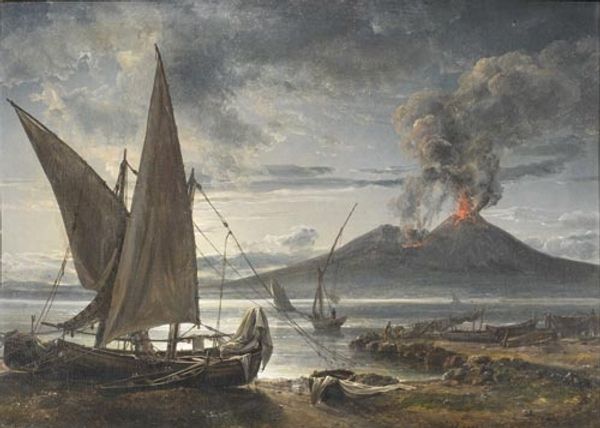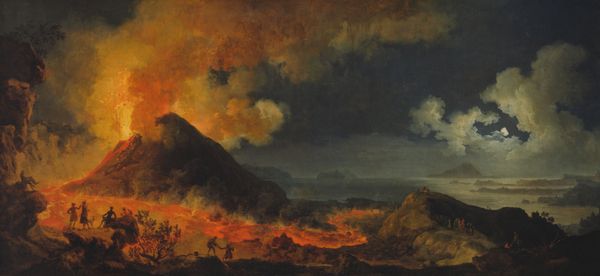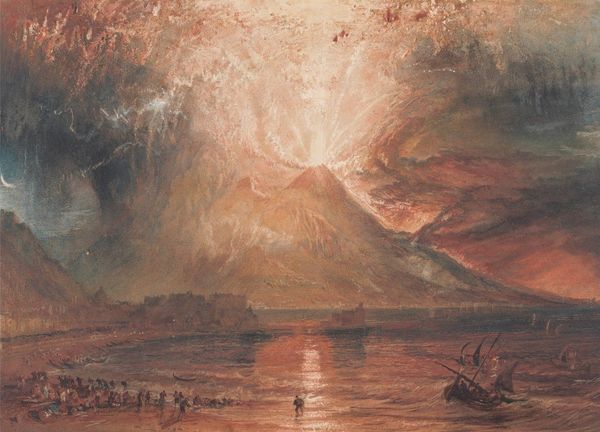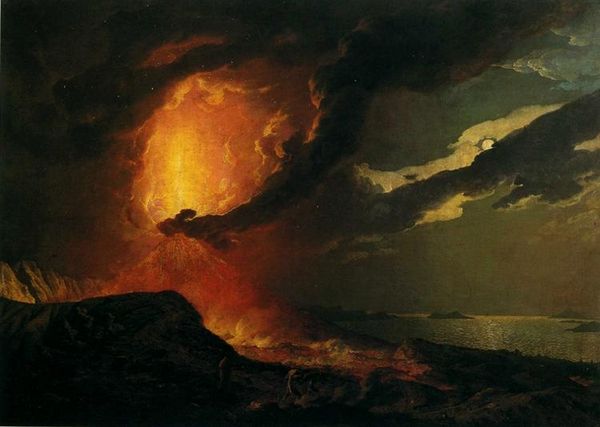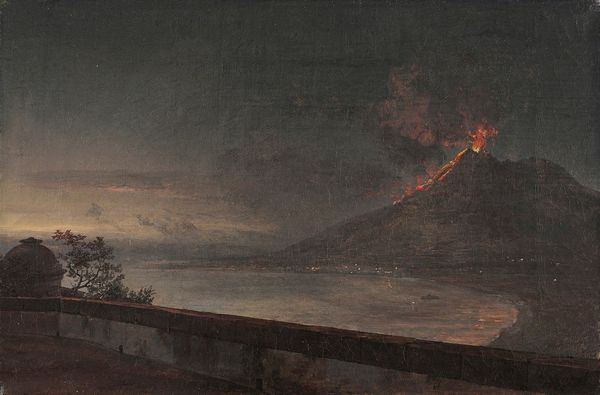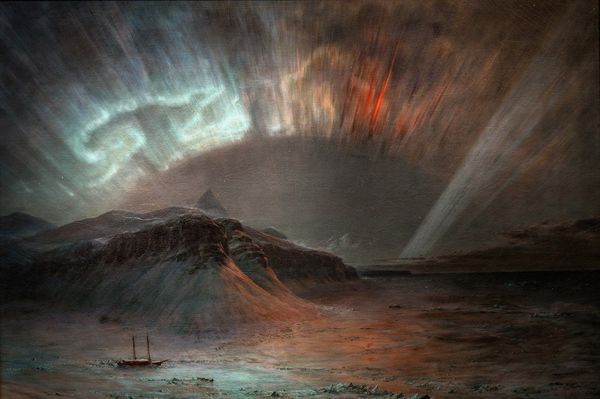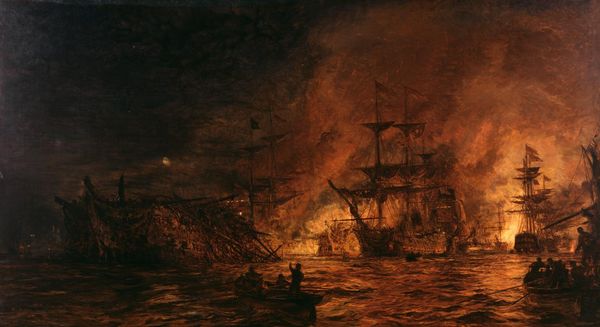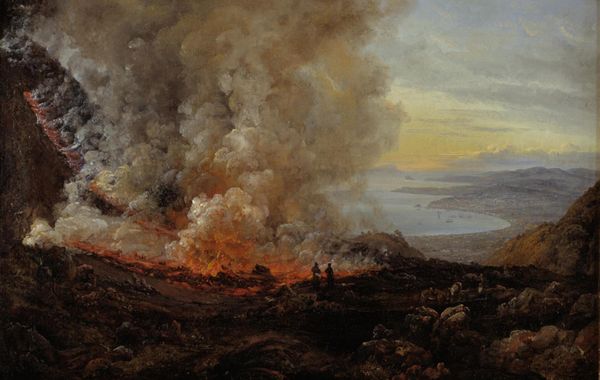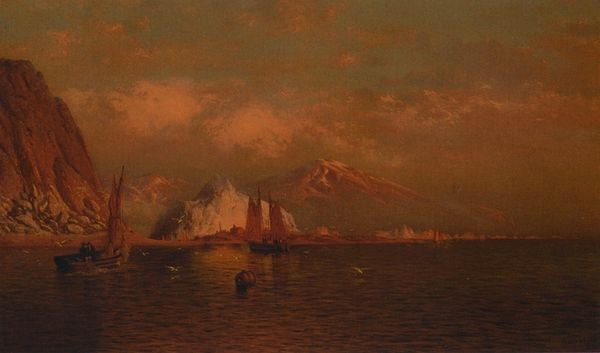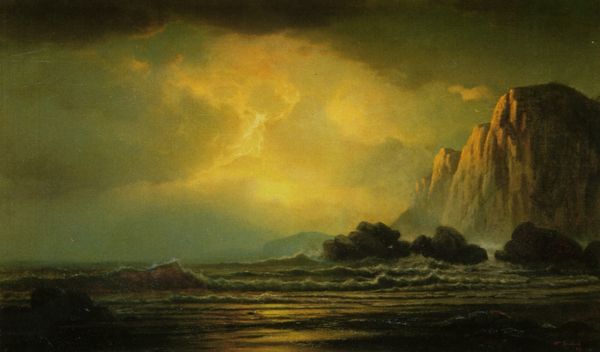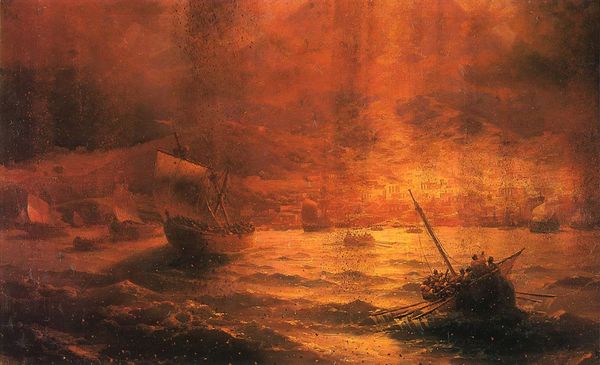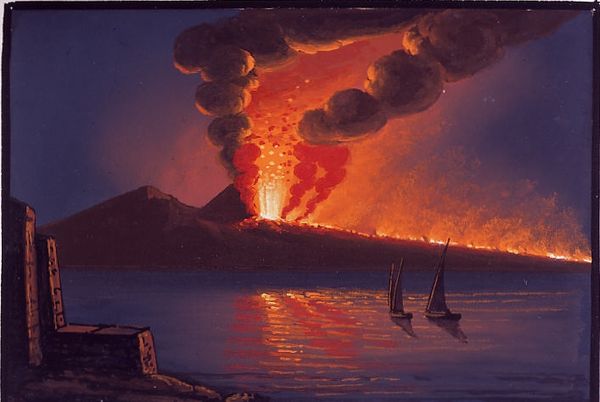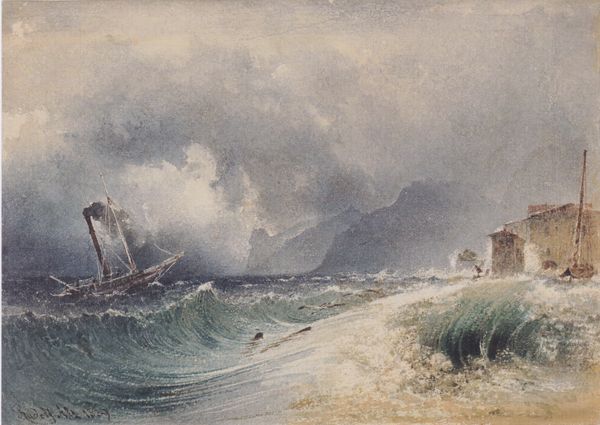
charcoal
#
landscape
#
charcoal drawing
#
charcoal art
#
oil painting
#
romanticism
#
charcoal
#
charcoal
#
watercolor
Copyright: Public domain
Editor: This is "The Eruption of the Vesuv" by Miklos Barabas, from 1835, created with charcoal. The fiery oranges contrasted with the cool grays definitely create a dramatic feel. How do you read the formal elements in this piece? Curator: The artist's masterful handling of chiaroscuro is quite striking. Observe how the fiery eruption is echoed by the reflection in the water, creating a strong vertical axis that bisects the composition. It is a dialogue between light and shadow, and also an interplay between order and chaos. Editor: It’s interesting you mention the axis – the volcano’s form seems to loom quite centrally, but is then offset by the boats in the foreground. Curator: Precisely. The vessels introduce a dynamism, disrupting the perfect symmetry and hinting at human vulnerability against the forces of nature. Moreover, consider the texture: the velvety charcoal creates a tangible atmospheric quality. How might you describe it? Editor: There’s definitely a contrast there too. The volcano's peak has sharper rendering, versus the blurred softness in the sky. I can almost feel the gritty texture of ash. Curator: Precisely. The gradations in tone and texture add to the depth. It encourages an optical ‘entry point’ into the canvas to focus the eyes. The formal components of "The Eruption of the Vesuv" certainly elevate it above mere depiction. Editor: I see that now. I appreciate understanding how those technical details impact my perception of the work. Curator: As we develop, our focus will often be aimed towards dissecting components such as these, that create new perspectives, even beyond the represented subject.
Comments
No comments
Be the first to comment and join the conversation on the ultimate creative platform.
